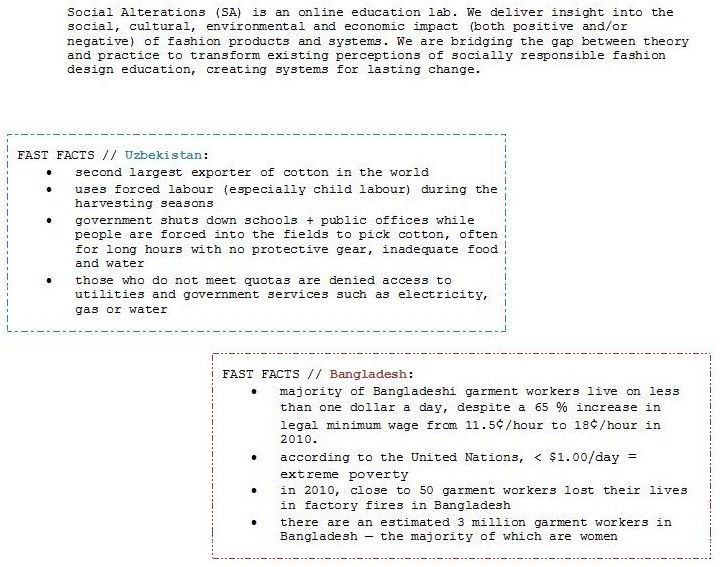
A young boy carrying cotton. From cbc.ca (Reuters/Shamil Zhumatov).
Uzbekistan is the second largest exporter of cotton in the world. Unfortunately, this cotton comes at a high price. Thanks to a number of campaigns, it is no secret that Uzbekistan uses forced labour especially child labour during the harvesting seasons. When it’s time to harvest the cotton, the government shuts down schools and public offices while people are forced into the fields to pick cotton, often for long hours with no protective gear, inadequate food and water. According to some accounts, children as young as seven are forced into the fields. Those who do not meet quotas are denied access to utilities and government services such as electricity, gas or water. This large scale mobilization of labour benefits a small number of large landowners and political elites who stand to make a large profit from the cotton. This concentration of wealth was further condensed following the fall 2008 harvest when the government forcibly confiscated farmland. Corruption obviously plays a large role in this system as The Economist (June 11th, 2009) has pointed out:
“Ostensibly to rationalise agricultural production, Mr Karimov decreed in October that landholdings should be consolidated. This gave local governors—the hakims, who often rule with an iron fist—a pretext to seize land and pass it on to cronies or those wealthy enough to offer bribes. In the past decade many farmers had signed 49-year leases, as Soviet-era collective farms were dismantled.”
So, what is being done to improve this situation? There has been a large scale mobilization to boycott Uzbek cotton. Over the past year, a number of large companies have heeded the call including Walmart, The Gap, Tesco, C&A, Levis Strauss, Marks & Spencer and Continental Clothing. In response, the Uzbek government decreed the prohibition of child labour and has ratified ILO conventions regarding child labour and minimum working age (conventions 182 & 138). Regardless, the forced labour continues. While the government denies the existence of child labour, reports from Uzbekistan tell a different story. This has spurred a group of institutional investors to write a letter to the ILO’s Director General urging him to take action on the matter. In this letter they write:
“With the fall 2009 cotton harvest fast approaching, we have urged the GOU [Government of Uzbekistan] to invite the ILO to deploy an initial expert observer and assessment mission immediately as a prelude to long-term engagement by the ILO, including monitoring on a multi-year basis. We understand that there have been consultations between the Uzbek government and the ILO in March and again in May. We urge the ILO to be prepared to accept such an invitation if it is forthcoming, provided that it is coupled with such a public acknowledgment of the problem and a commitment to work with the ILO on its terms—not only to implement the conventions but to curtail forced child labor in the cotton sector beginning immediately.
The Cotton Campaign blog is a great resource on the Uzbek cotton industry and actions taken to end forced labour including an excellent FAQ section. Other resources include the International Labor Rights Forum which has a page dedicated to what you can do.
Uzbekistan is not the only place where this happens, but this campaign is gaining ground. If this story has a happy ending, perhaps it will be a message to the rest of the countries engaging in these activities that forced labour is not acceptable.





